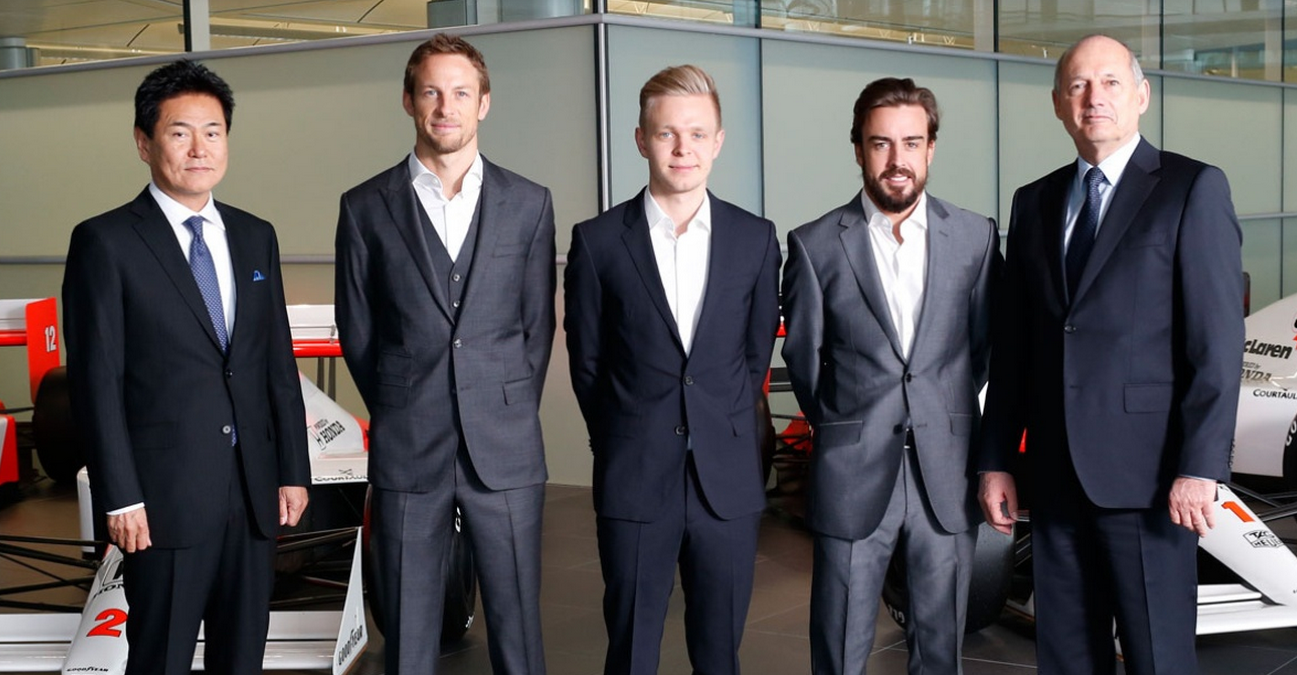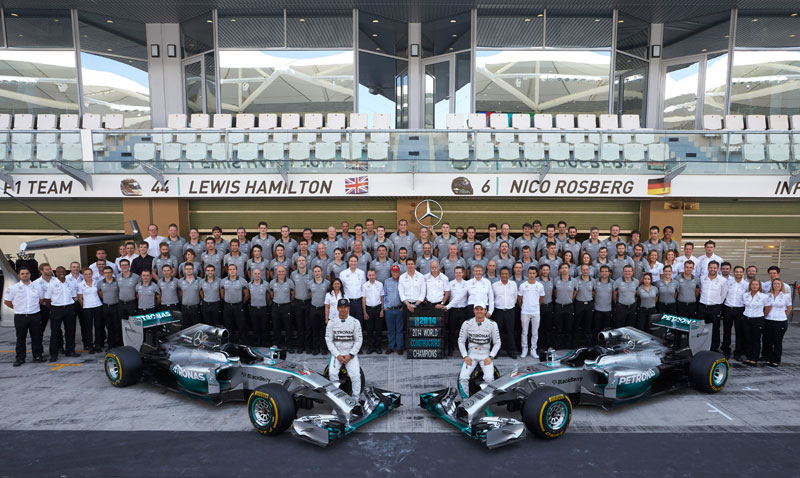The Circuit de Catalunya hasn’t always produced the most spectacular races, but since its introduction in 1991 it has earned its place as one of the classic modern F1 venues. The rise of Fernando Alonso added a new dimension in the form of packed grandstands and a crowd that matches the sort of emotion we were always used to seeing in places like Monza and Interlagos. And while he might not be victory contender in 2015, the local hero is sure to have a lot of support this weekend.
However, for those of a certain generation the current home of the Spanish GP is but a pale shadow of the other venue we once visited in Barcelona. In fact this season marks 40 years since Montjuich Park last hosted the race. The 1975 event was a politically charged weekend, bugged by controversy over safety standards, and which sadly ended in tragedy. It also saw McLaren earn what is without a doubt the Grand Prix victory that the team enjoyed less than any other.
Located in a hillside park developed for an international exposition in 1929, Montjuich was a special venue in every way. Even the hairpin-lined drive from where we stayed in the city to the track was uniquely enjoyable, as one could take in the amazing views of the port and the rest of Barcelona, while passing by floral gardens, a fairground and a cable car. The circuit itself was blindingly fast in places, which made it that much more challenging than Monaco. The big downside was the cramped pit facilities for the teams.
The circuit’s history stretched back to 1932, when it hosted its first motor race, just three years after the first ’round the houses’ race was held in Monaco. A Grand Prix took place the following year – under the Penya Rhin name – and stars of the era such as Tazio Nuvolari experienced it for the first time. Local hero Juan Zanelli triumphed that year, and in subsequent seasons the race was won by legendary names such as Achille Varzi, Luigi Fagioli and Nuvolari himself. The Spanish Civil War then put a stop to the action, and shortly after those hostilities ceased the start of WW2 put any form of international motorsport on hold.
Racing returned to Montjuich as early as 1946, but for nearly two decades it was restricted to domestic events for touring and sportscars. Meanwhile, the Pedralbes street track outside Barcelona hosted a Spanish GP in 1951 and 1954, before falling out of favour.
It wasn’t until 1965 that Montjuich first began to regain international status with the arrival of F3. The following year an F2 race attracted all the stars of the era – Jim Clark, Jackie Stewart, Graham Hill, Jack Brabham et al. None of them knew the track, and they all loved it.
Meanwhile a new permanent course was being created at Jarama, near Madrid, with a view to hosting a Spanish GP in 1968. Inevitably the Barcelona folks wanted a piece of the action, so a deal was done for Montjuich to host the race in alternate years, starting in 1969.
That first F1 race is best remembered for the huge accidents that befell Lotus team-mates Hill and Jochen Rindt, both of whom suffered failures of their high-mounted rear wings. Thankfully Hill was unhurt, while Rindt spent some time in hospital. However things might have been a lot worse had the cars not been contained by the guardrails that were still very much a novelty at the time. Indeed, the Montjuich organisers were regarded as pioneers of new safety standards.
Jackie Stewart won that race for Ken Tyrrell. The Scot triumphed again in 1971, while Emerson Fittipaldi proved victorious for Lotus in 1973. The latter two races passed without major incident, but the times were changing, and there was an ever-increasing focus on circuit safety. Drivers began to voice concerns about the high speeds at Montjuich, and the consensus was that while Monaco had its problems, it was less dangerous.
In the build-up to the 1975 race the GPDA told the organisers that they would not return in 1977 unless chicanes were built – although it was apparent that there was very little leeway in terms of extra space to do any such construction. Meanwhile, before the ’75 event French veteran Jean-Pierre Beltoise visited the track for a safety inspection on behalf of the GPDA. The former Matra and BRM man wasn’t actually racing in F1 that year, and by all accounts his visit was a cursory one, and in any case most of the barriers were not yet in place. He did however suggest that certain sections of the track would benefit from triple layer barriers and debris fencing.
The organisers complied, but made the mistake of entrusting the work to a contractor. When the drivers arrived for the race weekend, already with some reservations about being there, they were shocked by what they found. Barriers were badly placed, many nuts and bolts were missing, and support posts were loose. The place was clearly not up to standard, and a stand-off ensued as the drivers – with McLaren’s Fittipaldi among the most vocal – refused to take to the track.
The start of practice came and went as discussions continued. It was a tense time as we waited for something to happen, and the drivers made their views clear. The deaths of three of their colleagues over the previous two seasons – Francois Cevert, Peter Revson and Helmuth Koinigg – could be directly attributed to barriers, and thus their position was totally understandable.
Meanwhile they came under pressure from the organisers, from the CSI (as the governing body was then known), and increasingly from their own teams. Late on Friday afternoon, Jacky Ickx (not a GPDA supporter) and Vittorio Brambilla broke ranks and ran a few laps, but the majority stood firm pending a promise that work on the barriers would be completed overnight.
Come Saturday morning it was apparent that not enough progress had been made, and the drivers were still not satisfied. There followed an unprecedented display of solidarity as mechanics and other team personnel took on the responsibility of fixing the barriers as best they could.
Meanwhile the teams also came under pressure to fulfil their contractual obligations, and there were suggestions that the police could get involved and impound equipment. It just so happened that for the first time the entire paddock was laid out inside the old sports stadium in the park. It would not be hard for the authorities to close and secure the gates, and in effect hold the whole F1 circus to ransom.
For all involved, including the media, it was a stressful time. Eventually one-by-one the drivers left their meeting place and headed to the pit lane, and late on Saturday afternoon the cars began to take to the track. The drivers in effect had lost this particular battle.
Fittipaldi stuck by his principles, completing only three slow contractually-obliging laps with arm aloft by way of warning to those behind. On Sunday he refused to take part at all. He took a lot of flak for his stand, which was unfair given that just two years earlier he had demonstrated his commitment by winning the race.
The rest took to the grid, and as is always the case once they put their visors down and saw the starter’s flag drop they got on with the race – all except Emerson’s brother Wilson and Arturo Merzario, who would both stop in protest after just one lap.
The afternoon would quickly turn into a farce. The Ferraris of Niki Lauda and Clay Regazzoni that started on the front row were immediately caught up in an accident that also delayed several others, and amid a high early attrition rate some unfancied teams came to the fore. James Hunt led for a while in the Hesketh until he spun off, which left Mario Andretti in front in the Parnelli before his suspension failed, a result of first lap contact.
All this left another surprise runner in front in Rolf Stommelen, at the wheel of the car run by Graham Hill – who had been very supportive of the driver protest. The German led for some nine laps before disaster struck. As he crested a high-speed hump the rear wing flew off the Hill, and the helpless Stommelen was spent spiralling out of control. After making heavy contact with the barrier on one side of the track, and striking Carlos Pace’s following Brabham, the car took off and cleared the barrier on the other side, landing in an area occupied by marshals.
Tragically four people were killed – a fireman, two members of the media, and a spectator, while the driver suffered broken legs and other injuries. However, it was apparent that it could have been a lot worse. Had the barrier not been increased to triple layer at that point the car might have gone over it with even more momentum, while the debris fencing also prevented it from going further, and potentially into a spectator area.
Chaos ensued, and unforgivably it took the organisers several laps to fully appreciate the gravity of what had happened, and stop the race. McLaren’s Jochen Mass happened to be in front at the time, and he was eventually declared the winner. He was awarded half points, as less than 60% of the distance had been completed.
Of course the victory meant nothing either to Jochen or the team, and all of us were glad to get to the airport and head home after what had been a nightmare weekend.
Inevitably the accident meant the end of Montjuich Park as a motor racing venue. That year’s domestic programme was cancelled, and from 1976 Jarama became the permanent home of the Spanish GP. Montjuich hosted bike racing until as late as 1986 before time was finally called.
By then Spain had found a new F1 venue in the form of Jerez. Meanwhile the old Montjuich stadium would be given a new lease of life as the home of the 1992 Olympics, and it was in the slipstream of the build-up to those Games that the Circuit de Catalunya was constructed in time to host the 1991 Spanish GP. It was good to be back in Barcelona, a place we all enjoyed, but it was not quite the same. If you ever visit the city do find time to take in Montjuich Park and imagine what it was like when the sound of F1 engines reverberated around the place – it’s well worth it.

